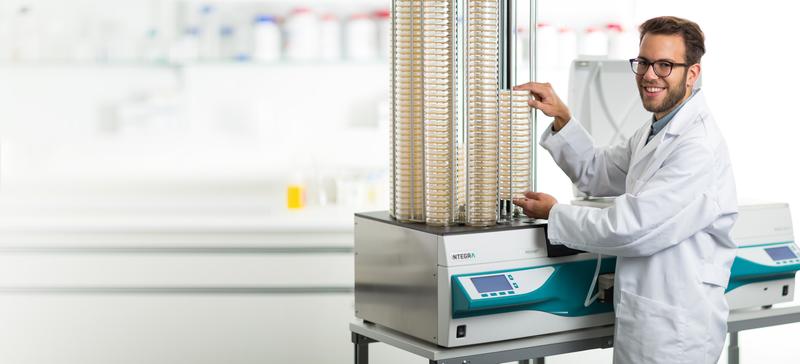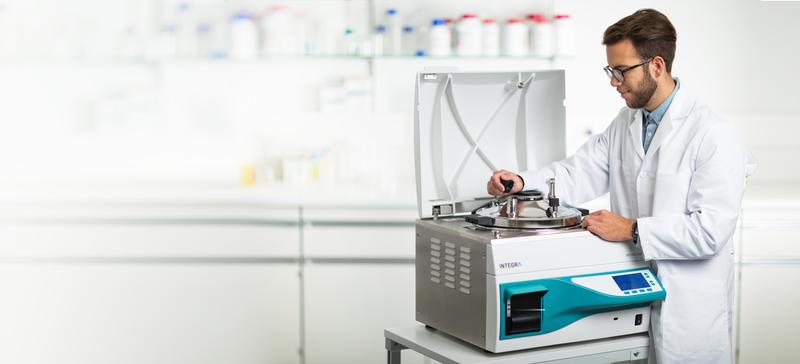-
Rapid and precise dilutions for the Most Probable Number test procedure with DOSE IT
Complete your MPN test as fast as lightning with the DOSE IT peristaltic pump
The Most Probable Number (MPN) or multi-tube method (McCrady)1 is a statistical method used to estimate the number of viable cells of a particular microorganism in a sample, most commonly food or water. It is used when samples contain too few bacteria to provide reliable viable cell numbers by classical plate count.
Replicates of liquid broth are filled into tubes and inoculated with different amounts of the sample. The bacterial growth is then monitored. Microorganism growth is indicated by a color change, with the tube becoming cloudy or producing gas during incubation. The number of viable microorganisms in the original sample is estimated according to an MPN table, based on statistical probabilities.
One of the most useful applications of MPN is to estimate coliform bacteria and Escherichia coli in water quality tests and screening, in particular, in drinking water. The presence of E. coli in water is indicative of recent fecal contamination. The DOSE IT peristaltic pump speeds up the pipetting steps of MPN procedures to test drinking water samples for coliform and E. coli.
-
Table of contents
The Most Probable Number (MPN) or multi-tube method (McCrady)1 is a statistical method used to estimate the number of viable cells of a particular microorganism in a sample, most commonly food or water. It is used when samples contain too few bacteria to provide reliable viable cell numbers by classical plate count.
Replicates of liquid broth are filled into tubes and inoculated with different amounts of the sample. The bacterial growth is then monitored. Microorganism growth is indicated by a color change, with the tube becoming cloudy or producing gas during incubation. The number of viable microorganisms in the original sample is estimated according to an MPN table, based on statistical probabilities.
One of the most useful applications of MPN is to estimate coliform bacteria and Escherichia coli in water quality tests and screening, in particular, in drinking water. The presence of E. coli in water is indicative of recent fecal contamination. The DOSE IT peristaltic pump speeds up the pipetting steps of MPN procedures to test drinking water samples for coliform and E. coli.
Key benefits
- The DOSE IT allows fast and accurate dispensing of broth and sample into the culture tube.
- DOSE IT’s enclosed system ensures that the culture media and sample remain contained inside the tubing, minimizing the risk of contamination. The tubing can also be easily sterilized.
- The compact and lightweight design allows the DOSE IT to be moved and placed virtually anywhere in the lab, including inside a laminar flow cabinet, guaranteeing sterile working conditions.
- Hands-free control of dispensing using the optional benchtop switch or foot switch, or remote operation via PC software, offers additional flexibility for adjustment of dispense rates to the user's workflow.
- CUSTOMIZE mode enables easy and efficient creation of personalized liquid handling protocols.
- A large display and clear user guidance support fast set-up and use.
Overview: How to perform MPN tests
Before starting the MPN test, sterile single- and double-strength Phenol Red Lactose broth should be freshly made (MacFaddin)2. A 10 times dilution of the water sample should also be prepared with phosphate buffer (0.5 mM K2HPO4, pH 7.2).
The protocol is divided into two dispensing programs, MPN-1 and MPN-2 (Figure 1).
Overview of the steps and corresponding programs:
- Program 1: Dispensing the broth (MPN-1)
- Program 2: Dispensing the samples (MPN-2).
The detailed programs are given in the appendix (Tables 2 and 3, respectively). Both programs need to be manually set up on the DOSE IT peristaltic pump.
Downloads: Protocols for the Most Probable Number method
Here you can download the two programs used in this application in a ZIP file and use them on your DOSE IT.
Experimental set-up

Step-by-step procedure: Program 1 - Dispensing the broth
1. DOSE IT set-up
Tubing adjustment, priming and calibration for dispensing the broth
Open the pumphead, adjust the tubing clamps and insert the 4.0 mm tubing in the DOSE IT. Put the aspiration tube with the tube collar into the single-strength Phenol Red Lactose broth and the dispensing tube into an empty bottle in order to fill the empty tubing with liquid. Choose MPN-1 from the APPLICATIONS menu and press START to access the program window (Figure 2).
Perform the priming and calibration steps according to the Operating instructions.
2. Dispensing the single-strength broth
Filling 10 tubes with 10 ml single-strength Phenol Red Lactose broth
Put the dispensing tube into the first test tube. Press START. DOSE IT directly dispenses 10 x 10 ml of single strength broth with 2 second intervals between tubes (Step 1). After each dispense, move the dispensing tube into the next empty test tube. 'Waiting time: manual' is displayed on the screen (Step 2) when tube filling has finished. Remove the aspiration tube with the tube collar from the single-strength broth and put the dispensing tube into an empty bottle to drain. Press NEXT STEP. The single-strength broth will be removed from the tubing (Step 3). Press PAUSE once all liquid is drained from the tubing.
3. Dispensing the double-strength broth
Filling five tubes with 10 ml double-strength Phenol Red Lactose broth
Put the aspiration tube with the tube collar into the double-strength broth and the dispensing tube into an empty bottle to refill the empty tubing. Press NEXT STEP (Step 4). Press PAUSE once the tubing is filled with double-strength broth. Put the dispensing tube into the first test tube. Press NEXT STEP (Step 5). DOSE IT dispenses 5 x 10 ml of broth into the tubes with a 2 second break between tubes. During each pause, move the dispensing tube into the next empty test tube. At the end, 'Custom application complete.' will appear on the screen. Press MAIN MENU to continue with program MPN-2.
Tip:
- As the less concentrated broth (single-strength broth) is dispensed before the more concentrated broth (double-strength broth), cleaning of the tubing is not required between the dispensing steps.

Step-by-step procedure: Program 2 - Dispensing the samples
1. DOSE IT set-up
Tubing adjustment, priming and calibration for dispensing the sample
Open the pumphead and remove the 4.0 mm tubing. Adjust the tubing clamps and insert the
2. Dispensing the diluted water sample
Addition of 1 ml of diluted water sample to 10 ml of single-strength broth (corresponds to 0.1 ml of original water sample volume – see Figure 1)
Put the dispensing tube into the first test tube containing single-strength broth. Press START. DOSE IT directly dispenses 5 x 1 ml of the diluted water sample with a 2 second interval between tubes (Step 1). During each pause, move the dispensing tube into the next empty test tube. Make sure the dispensing tube doesn't touch the surface of the broth in the tube. When complete, 'Waiting time: manual' will appear on the screen (Step 2). Remove the aspiration tube with the tube collar from the diluted water sample and put the dispensing tube into an empty bottle to drain. Press NEXT STEP. The diluted water sample will be pumped out of the tubing (Step 3). Press PAUSE when it is done.
3. Dispensing the original water sample to the single-strength broth
Addition of 1 ml original water sample to 10 ml single-strength broth (1 ml sample – see Figure 1)
Put the aspiration tube with the tube collar into the undiluted water sample and the dispensing tube into an empty bottle. Press NEXT STEP (Step 4). Press PAUSE when the tubing is filled with the water sample. Put the dispensing tube into the first test tube containing single-strength broth. Press NEXT STEP (Step 5). DOSE IT dispenses 5 x 1 ml of water sample to the tubes with a 2 seconds interval between tubes. During this pause, move the dispensing tube into the next empty test tube. Make sure the dispensing tube doesn't touch the surface of the broth in the tube. Once finished, 'Waiting time: manual' will appear on the screen (Step 6).
4. Dispensing the original water sample to the double-strength broth
Addition of 10 ml original water sample to 10 ml double-strength broth (10 ml sample – see Figure 1)
Put the dispensing tube into the first test tube containing double-strength broth. Press NEXT STEP (Step 7). DOSE IT directly dispenses 5 x 10 ml of water sample to the tubes with 2 seconds between each tube. During this pause, move the dispensing tube into the next empty test tube. Once finished, 'Custom application complete.' will appear on the screen.
Tip:
- As the diluted water sample is dispensed prior to the original water sample, cleaning of the tubing is not required between the dispensing steps.
After adding broth and sample to the tubes, mix and incubate at 37 °C for 24 hours.
If you have further samples, repeat programs MPN-1 and MPN-2, or adapt the MPN-1 program to fill more tubes in one go, to speed up your process even more.
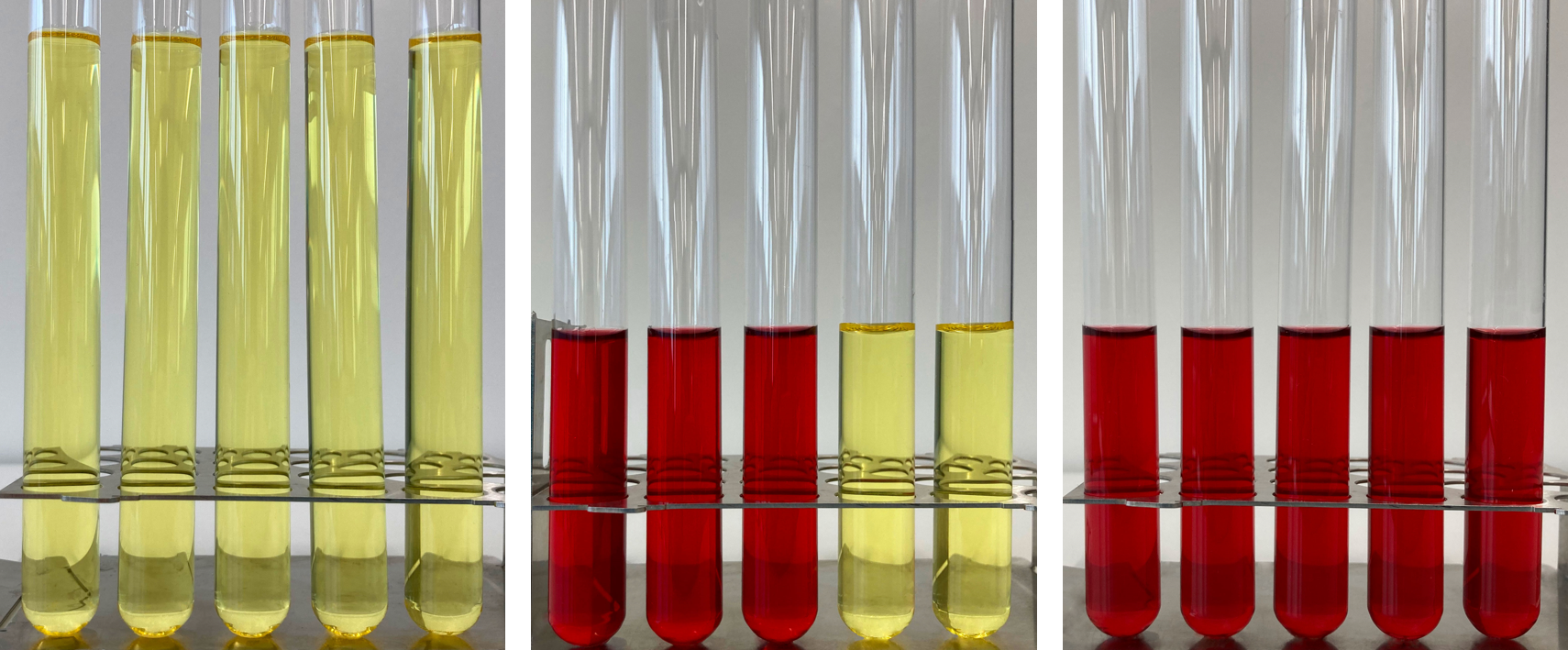
Remarks
The MPN method can be used to estimate the number of several types of microorganism. For example, it is commonly used in the food industry for estimating the number of Clostridium tyrobutyricum in cheese or Listeria monocytogenes (causing listeriosis) in meat and dairy products.
How to interpret the results of the MPN test of water samples
In this specific test, Phenol Red Lactose broth is used to detect coliforms in drinking water. It contains phenol red indicator, which is red at pH 7.4 ± 0.2, changing to yellow at acidic pH. Coliforms ferment lactose and produce an acid byproduct. Therefore, when they are present in drinking water, the Phenol Red Lactose broth turns yellow. After incubation, the number of positive test tubes per dilution step should be recorded.
How to use the MPN table
The number of positive (yellow) tubes from the five tubes in the first, second and third dilutions should be noted, then matched to the MPN table (Table 1). Based on the result, an estimation is made on how many bacteria are found in 100 ml of sample.
In the example above (Figure 3), the pattern of positive (yellow) tubes is: 5-2-0, which means that on average approximately 49 bacteria (with the confidence interval: 17-130 bacteria) were in 100 ml original water sample.
1M. H. McCrady (1918). Tables for Rapid Interpretation of Fermentation-tube Results. The Public Health Journal 9(5): 201-220.
2J. MacFaddin (1985): Cultivation-Identification-Maintenance of Medical Bacteria. Vol.1. Williams and Wilkins, Baltimore, MD.
Table 1: MPN values per 100 ml sample and 95 % confidence limits.
| No. of tubes giving a positive reaction |
MPN (per 100 ml) |
95% confidence limits |
No. of tubes giving a positive reaction |
MPN (per 100 ml) |
95% conficence limits |
|||||||
| 5 of 10 ml |
5 of 1 ml |
5 of 0.1 ml |
lower | upper | 5 of 10 ml |
5 of 1 ml |
5 of 0.1 ml |
lower | upper | |||
| 0 | 0 | 0 | <2 | <1 | 7 | 4 | 3 | 0 | 27 | 9 | 80 | |
| 0 | 1 | 0 | 2 | <1 | 7 | 4 | 3 | 1 | 33 | 11 | 93 | |
| 0 | 2 | 0 | 4 | <1 | 11 | 4 | 4 | 0 | 34 | 12 | 93 | |
| 1 | 0 | 0 | 2 | <1 | 7 | 5 | 0 | 0 | 12 | 7 | 70 | |
| 1 | 0 | 1 | 4 | <1 | 11 | 5 | 0 | 1 | 31 | 11 | 89 | |
| 1 | 1 | 0 | 4 | <1 | 11 | 5 | 0 | 2 | 43 | 15 | 110 | |
| 1 | 1 | 1 | 6 | <1 | 15 | 5 | 1 | 0 | 33 | 11 | 93 | |
| 2 | 0 | 0 | 5 | <1 | 13 | 5 | 1 | 1 | 46 | 16 | 120 | |
| 2 | 0 | 1 | 7 | 1 | 17 | 5 | 1 | 2 | 63 | 21 | 150 | |
| 2 | 1 | 0 | 7 | 1 | 17 | 5 | 2 | 0 | 49 | 17 | 130 | |
| 2 | 1 | 1 | 9 | 2 | 21 | 5 | 2 | 1 | 70 | 23 | 170 | |
| 2 | 2 | 0 | 9 | 2 | 21 | 5 | 2 | 2 | 94 | 28 | 220 | |
| 2 | 3 | 0 | 12 | 3 | 28 | 5 | 3 | 0 | 79 | 25 | 190 | |
| 3 | 0 | 0 | 8 | 1 | 19 | 5 | 3 | 1 | 110 | 31 | 250 | |
| 3 | 0 | 1 | 11 | 2 | 25 | 5 | 3 | 2 | 140 | 37 | 340 | |
| 3 | 1 | 0 | 11 | 2 | 25 | 5 | 3 | 3 | 180 | 44 | 500 | |
| 3 | 1 | 1 | 14 | 4 | 34 | 5 | 4 | 0 | 130 | 35 | 300 | |
| 3 | 2 | 0 | 14 | 4 | 34 | 5 | 4 | 1 | 170 | 43 | 490 | |
| 3 | 2 | 1 | 17 | 5 | 46 | 5 | 4 | 2 | 220 | 57 | 700 | |
| 3 | 3 | 0 | 17 | 5 | 46 | 5 | 4 | 3 | 280 | 90 | 850 | |
| 4 | 0 | 0 | 13 | 3 | 31 | 5 | 4 | 4 | 350 | 120 | 1000 | |
| 4 | 0 | 1 | 17 | 5 | 46 | 5 | 5 | 0 | 240 | 68 | 750 | |
| 4 | 1 | 0 | 17 | 5 | 46 | 5 | 5 | 1 | 350 | 120 | 1000 | |
| 4 | 1 | 1 | 21 | 7 | 63 | 5 | 5 | 2 | 540 | 180 | 1400 | |
| 4 | 1 | 2 | 26 | 9 | 78 | 5 | 5 | 3 | 920 | 300 | 3200 | |
| 4 | 2 | 0 | 22 | 7 | 67 | 5 | 5 | 4 | 1600 | 640 | 5800 | |
| 4 | 2 | 1 | 26 | 9 | 78 | 5 | 5 | 5 | >1800 | - | - | |
Reference: WHO: Guidelines for drinking-water quality, Annex 5: Multiple-tube method for thermotolerant (fecal) coliforms.
Conclusion
- Regular testing for coliform bacteria is needed to ensure that water quality is sufficiently high. The Most Probable Number method is suitable for the estimation of coliforms in water samples, but this multi-tube process can be very time consuming and tedious if there is a large number of samples. The DOSE IT peristaltic pump makes MPN testing easy and efficient, with fast aliquoting of the culture media and samples into test tubes.
- DOSE IT offers self-explanatory dispense settings and parameters. It is very simple to create customized liquid handling protocols based on configurable parameters, such as volume, flow rate and repetitions.
- The DOSE IT is compatible with different sized tubing ranging from 1 mm for small doses to 8 mm for high throughput pumping, making it useful for accurate dispensing of a broad selection of volumes.
Ask our expert. Leave a comment!
Write us if you have any questions regarding the application note or one of our instruments.
Any questions? I'm happy to help!
Instruments and accessories
DOSE IT Laboratory Peristaltic Pump
DOSE IT has been especially designed for laboratories looking for an easy-to-use, compact and portable peristaltic pump. With its light weight and compact design, DOSE IT fits everywhere in the lab and can be easily moved. The intuitive user interface with straightforward instructions makes it very easy to operate. DOSE IT is especially helpful for dispensing culture media, buffers or other solutions.
Part No. 171 000
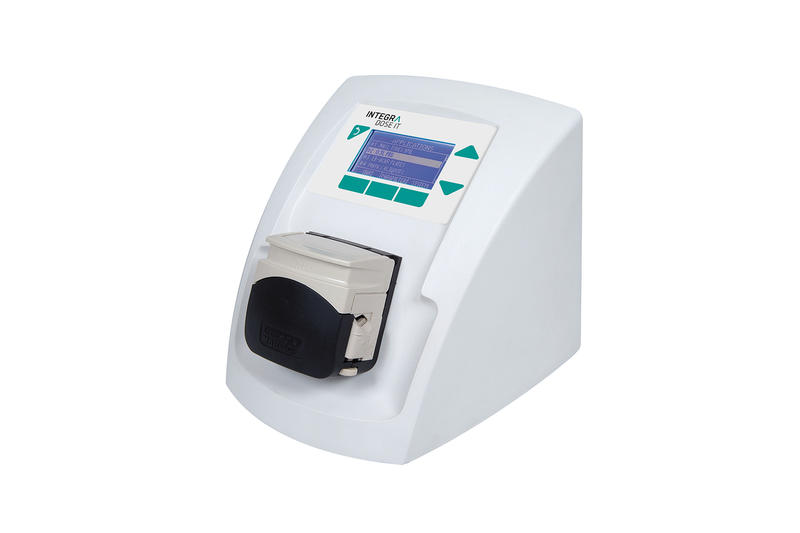
Foot switch
DOSE IT Foot switch: For hands-free operation, with connecting cable.
Part No. 143 200
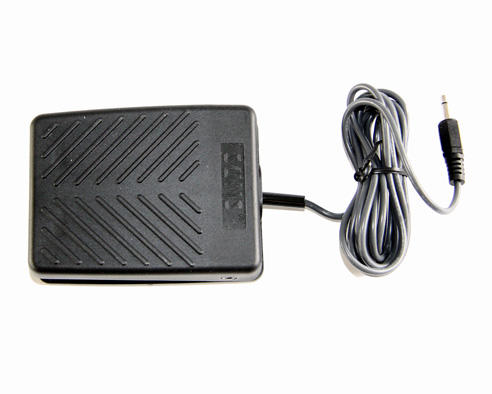
Benchtop switch
DOSE IT Benchtop switch: For ease of operation, with connecting cable.
Part No. 171 081
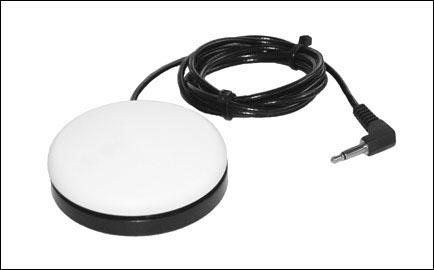
Silicone tubing
DOSE IT silicone tubing: 2.5 m, autoclavable tubing, ID (MM) 1 and 4.
Part No. 171 021
Part No. 171 024
Aspiration/dispensing tubes
DOSE IT aspiration/dispensing tube, length 10 cm, stainless steel, one end dented, ID (MM) 2 and 4.
Part No. 171 052
Part No. 171 054
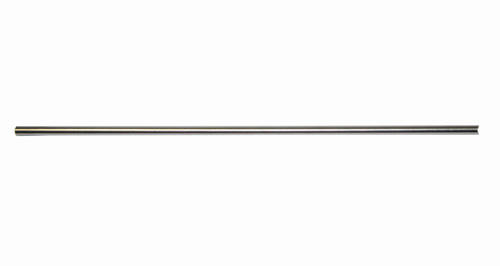
Tube collar
Tube collar used as a weight for the aspiration tube or as a clamp spacer for the dispensing tube. ID (MM) 1-3.
Part No. 171 071

Test tube rack stainless steel, autoclavable.
Test Tube Rack for Ø 16 mm test tubes, 5 x 12 capacity, rack height 90 mm.
Part No. 103 061
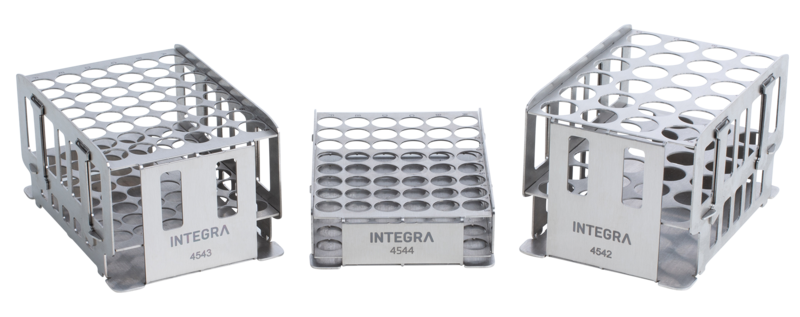
VWR: Test Tube
Borosilicate 3.3 glass.
- Excellent chemical resistance
- High temperature resistance
- Minimal thermal expansion, giving relatively high resistance to temperature changes
The economical alternative for a wide range of uses. Thick walled.
Part No. 212-0031
Source: VWR Website
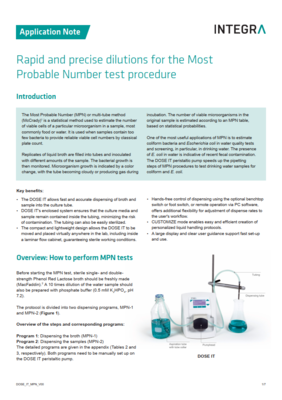
Download
Download App Note as PDF
DownloadRapid and precise dilutions for the Most Probable Number test procedure with DOSE ITCustomer’s voice
Very easy to use. Allows to intuitively change the programs via buttons and to autoclave the tubes for contamination-free operation. No maintenance / special cleaning is necessary. Enables rapid gripping and sensing of several reservoirs. Thanks to compact design and small footprint, can be set up in every lab.

